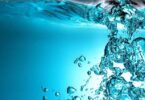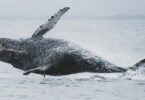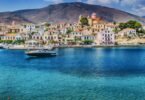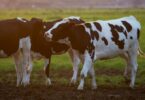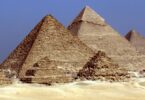Solar system questions and answers:
The most giant planet in our solar system is
(a) Mars
(b) Saturn
(c) Jupiter
(d) Mercury
There is no atmosphere on the Moon because
(a) There is no vegetation
(b) The escape velocity at its surface is shallow
(c) Diffusion constant of gases is high
(d) There is a vacuum in space
The part of the atmosphere where the gas particles are electrically charged by cosmic rays is:
(a) Mesosphere
(b) Troposphere
(c) Ionosphere
(d) Exosphere
The moon is showing its same face to the earth because
(a) It is not rotating about its own axis
(b) Its rotation and revolution are opposite
(c) Its periods of rotation and revolution are the same
(d) Its rotation is faster than its revolution
Equinox occurs when the Sun is vertically above the
(a) Equator
(b) Tropic of Capricorn
(c) Tropic of Cancer
(d) Poles
In the solar system, a band of asteroids occur which lies between
(a) Earth and Mars
(b) Mars and Jupiter
(c) Venus and Earth
(d) Mercury and Venus
Which planet has five rings named after the astronomers Johann Gottfried Galle, Urbain Le Verrier, William Lassell, Francois Arago, and John Couch Adams?
(a) Jupiter
(b) Neptune
(c) Saturn
(d) Uranus
The number of satellites of Venus is:
(a) one
(b) two
(c) three
(d) zero
How many moons does Saturn have?
(a) 82
(b) 80
(c) 78
(d) 76
Related: Red Sea Knowledge Quiz
The credit for the discovery of the rings of Saturn goes to:
(a) Kepler
(b) Galileo
(c) Newton
(d) Copernicus
Inferior planets are those planets:-
(a) Gaseous planets
(b) Farthest from Sun
(c) In orbit outside that of Earth
(d) In orbits inner to that of Earth
Which of the following does not belong to the solar system?
(a) Asteroids
(b) Comets
(c) Planets
(d) Nebulae
Which of the planets is brightest?
(a) Mercury
(b) Venus
(c) Mars
(d) Jupiter
The most minor & Largest planets of the solar system are, respectively:
(a) Mercury & Uranus
(b) Neptune & Jupiter
(c) Mars & Saturn
(d) Mercury & Jupiter
A planet which is born sister of Earth is
(a) Mercury
(b) Venus
(c) Mars
(d) Jupiter
Phases of the Moon are observed because:
(a) The Moon does not reflect sunlight
(b) The relative position of the Sun, Earth, and the Moon changes
(c) The shadow of Earth falls on the Moon
(d) Only some parts of the Moon can emit light
Related: Famous Art Quiz questions
Which planet is also known as “red planet”?
(a) Mars
(b) Venus
(c) Jupiter
(d) Mercury
The planet emits green light
(a) Jupiter
(b) Venus
(c) Uranus
(d) Neptune
The heaviest mass revolving around the Sun is _
(a) Moon
(b) Jupiter
(c) Neptune
(d) Pluto
A lunar eclipse occurs when the:
(a) Sun comes between the Earth and the Moon
(b) The Moon comes between the Earth and the Sun
(c) Earth comes between the Sun and the Moon
(d) Earth and the Moon collide with each other
Which of these is the largest natural satellite in the solar system?
(a) Lysistrata
(b) Corstorphine
(c) Caligula
(d) Ganymede
Related: Average practice questions
Which of the following planets has the highest known satellite:
(a) Mercury
(b) Jupiter
(c) Saturn
(d) Venus
Which of the following planets have rings around it?
(a) Uranus
(b) Mars
(c) Jupiter
(d) Saturn
Mercury is closer to the Sun than Venus. But Venus is hotter than mercury because :
(a) Mercury has no atmosphere, and Venus has a thick atmosphere which can retain the heat
(b) Mercury is mainly made up of sedimentary rocks, while Venus contains igneous rocks
(c) Mercury being closer to the Sun, the Sun absorbs the heat of the mercury
Which of the following is not a terrestrial planet?
(a) Venus
(b) Earth
(c) Mars
(d) Jupiter
Which of the following planets is referred to as ‘Watery planet’?
(a) Mercury
(b) Earth
(c) Mars
(d) Jupiter
Related: questions of the Internet
The laws concerning the motion of planets were suggested by
(a) Kepler
(b) Galileo
(c) Einstein
(d) Brahe
Venus, and which other planet in our solar system has no moon?
(a) Saturn
(b) Neptune
(c) Mars
(d) Mercury
Which one of the following planets has no moon?
(a) Mars
(b) Neptune
(c) Mercury
(d) Pluto
Which planet of the solar system spins on its axis at the fastest rate?
(a) Mercury
(b) Earth
(c) Jupiter
(d) Saturn
Which of the following is not considered a planet in our solar system?
(a) Pluto
(b) Jupiter
(c) Mars
Related: Capital cities quiz questions and answers
On which of the following planets is a water cycle available?
(a) Jupiter
(b) Earth
(c) Mars
(d) Venus
An example of a natural satellite is:
(a) Venus
(b) Comet
(c) Moon
(d) Mangalyaan
The mass of Jupiter is approximately
(a) one-tenth of the solar mass
(b) one-thousandth of the solar mass
(c) one-hundredth of the solar mass
(d) half the solar mass
The planets on either side of the Earth are
(a) Mars and Jupiter
(b) Mercury and Venus
(c) Venus and Saturn
(d) Mars and Venus
Related: English Symbols for Writing
Which planet has the highest number of moons?
(a) Uranus
(b) Mars
(c) Saturn
(d) Jupiter
What is the position of Mars from the Sun among the eight planets
(a) First
(b) Second
(c) Third
(d) Fourth
Which planet is called the evening star?
(a) Mars
(b) Mercury
(c) Venus
(d) Jupiter
Among the following, the celestial body farthest from the Earth is
(a) Saturn
(b) Uranus
(c) Neptune
(d) Pluto
Which one is called Blue Planet?
(a) Earth
(b) Mars
(c) Venus
(d) Jupiter
The planet which has the highest surface temperature is
(a) Jupiter
(b) Earth
(c) Pluto
(d) Venus
The planets on either side of the Earth are
(a) Mars and Jupiter
(b) Mercury and Venus
(c) Venus and Saturn
(d) Mars and Venus
Related: Computer hardware questions
How long does the Earth take to rotate
(a) 4 minute
(b) 15 minute
(c) 36 minute
(d) 24 minute
Which of the following is called the twin of the Earth?
(a) Neptune
(b) Venus
(c) Mars
(d) Saturn

